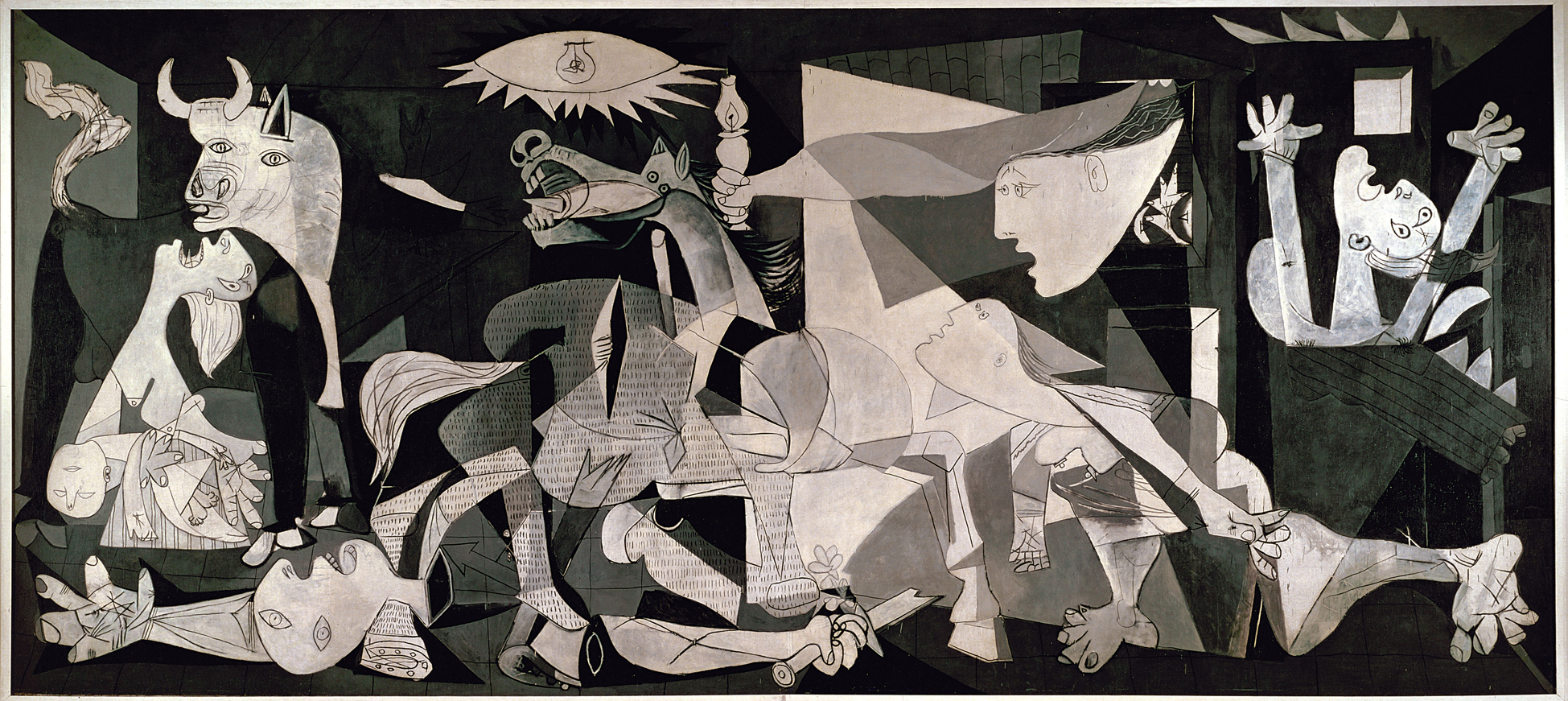Pablo Picasso is one of the most well-known artists of the twentieth century. His most famous work, Guernica, is a reflection of the Spanish Civil War, when the German Nazi forces bombed the city of Guernica. During the Spanish Civil War, when the Republican forces fought against the Fascist forces lead by Francisco Franco, Picasso's colleagues and representatives of the government asked Picasso to produce a painting for the Spanish Pavilion of the 1937 World's Fair. Although Picasso was troubled by Franco and sympathized with the new democratic government, he did not respond to their offer, because he did not want to associate politics with art. However, the German bombing of Guernica totally changed Picasso's mind. With the help of Franco, German Nazi forces used Guernica as a testing ground for their newly developed weapons; more than 1,600 civilians. Picasso was stunned when he saw the photographs of the town in the news; he immediately painted Guernica. Through the painting, Picasso expressed his discontent with the existing political conflicts, his desire for peace, and his anti-war message to the rest of the world (“Guernica: Testimony of War”).
In Guernica, Picasso directed his focus towards women and children. He wanted to show how immoral the German Nazis and Franco were for aiming the bombs at innocent civilians. On the far left of the painting, a mother is holding the limp corpse of her child. She is wailing with her head thrown back, and her eyes are looking upward; perhaps she is asking God why the circumstances of her life are so miserable. The woman on the far right is also looking up. Her hands are reaching up as if she is pulled down by some force. There are many triangles around and above her, perhaps those represent fire created by the German bombs; the fire is devouring the woman. Picasso also put many hidden meanings in Guernica. The gazing bull and the suffering horse are two of the most famous features in the painting, because they lead to many contrasting interpretations. Some viewers say that they represent the fighting parties, the Republicans and the Fascists; some believe they stand for the struggle between males and females; and others think that they are both victims of the bombing. Picasso himself never defined the meaning of the bull and the horse, because he wanted the viewers to interpret the two symbols by themselves. By allowing independent interpretation and analysis, Picasso is encouraging the viewers to reconsider the purpose of war and question the necessity of destruction.
"Guernica: Testimony of War." PBS. 28 April 2011. <http://www.pbs.org/treasuresoftheworld/guernica/gmain.html>.
“Guernica: Questions of Meaning.” PBS. 10 May 2011. < http://www.pbs.org/treasuresoftheworld/a_nav/guernica_nav/gnav_level_1/5meaning_guerfrm.html>.
Pablo Picasso. 28 April 2011. <http://www.pbs.org/treasuresoftheworld/guernica/gmain.html>.

No comments:
Post a Comment